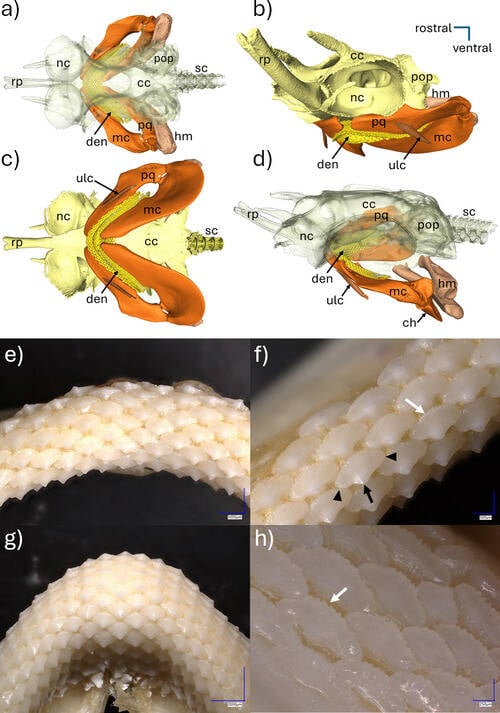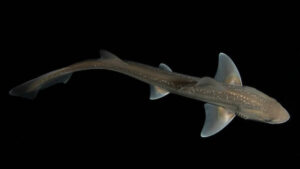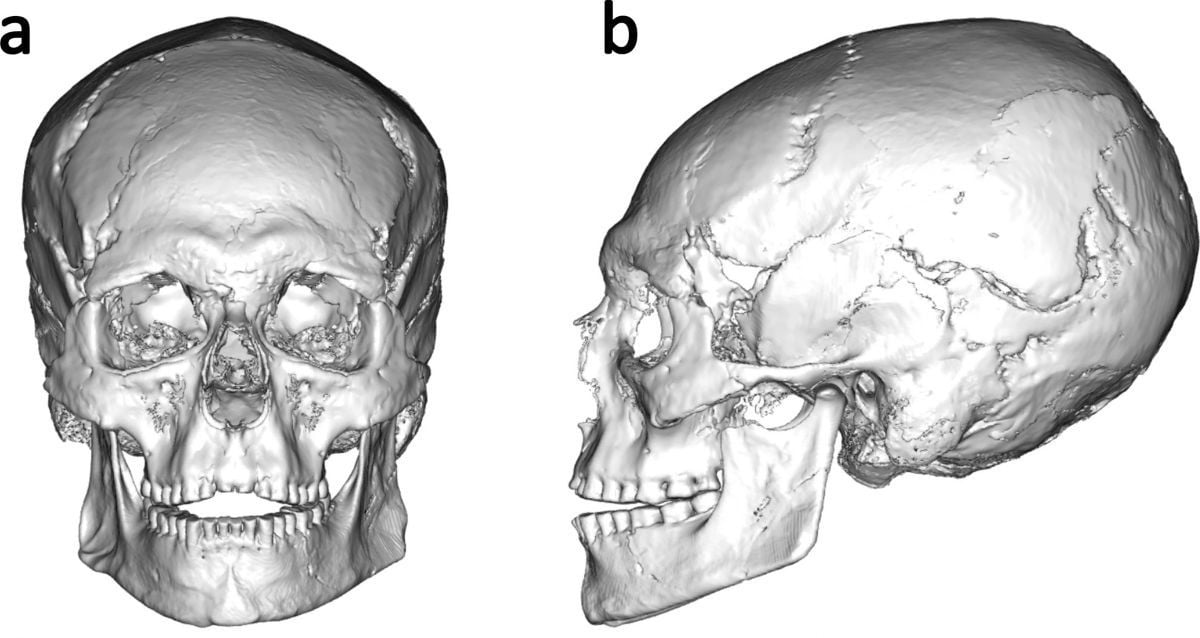“Silent Predators No More: The Shocking Sounds of Sharks Revealed!”
However, other types of cartilaginous fish, rays, and skates have been recorded making sounds, particularly when startled. While sharks and stingrays evolved separately beginning 200 million years ago, it is possible that both species maintain this ability to produce sounds today.
In order to confirm that rig sharks did not possess some hidden sound-producing organ, Nieder and her team conducted MicroCT scans and 3D reconstructions of the rig shark’s anatomy and found nothing that could explain the clicking.
With all obvious options exhausted, the team hypothesized that the clicking noises were the result of the shark smashing its teeth together.
The species features a series of tightly-packed, blunt teeth capable of crushing hard-shelled prey like crabs. It is possible that the snapping of the jaws also produces the clicking sound that Nieder and her team recorded.

Nieder et al./R. Soc. Open Sci.Images and scans of the rig shark’s jaw and teeth, believed to be the source of the sounds.
While Nieder and her colleagues’ research has provided the world with the first-ever recordings of shark sounds, there is still more research to be done. After all, questions remain about whether the sharks make these clicking sounds in the wild, whether all sharks are capable of these noises, and most importantly, what the purpose of these sounds is.
Nieder and her team plan to conduct more research, this time with other shark species, to get to the bottom of these strange shark sounds.
“I think there is a chance other sharks are making similar noises,” Nieder told CNN. “This documentation could help [us] start listening to sharks, and maybe we can learn more interesting things.”













